
Disclosure: This article may contain affiliate links, which means if you click on some links, we may earn a commission and no additional cost to you.
If you want to start a blog but don’t know where to start, I’ll guide you step by step from being a confused aspiring blogger into a certified faulty blogger.
But please, hear me out.
Being a faulty blogger means embracing your mistakes and allowing constructive criticism. And what matters most is to keep on learning and improving yourself to become a better blogger.
As a faulty blogger myself, I made a lot of blogging mistakes in the past (and will be making a lot more in the future). But this time, you won’t be making the same mistakes that I did because I will be sharing with you the blogging best practices that I have learned through my blogs.
So let’s get started.
What’s a blog?
A blog is like an online version of your diary. It’s where you express thoughts and share your experiences.
The key difference from a traditional diary is that your blogs will be read by billions of people around the world.
How cool is that?
In technical terms, a blog is simply a website that contains all your blog posts, which you manage through a CMS (content management system).
But don’t worry, if it sounds a bit technical because this tutorial is designed for beginners just like you. You can follow along without prior experience.
Why start a blog?
There are various reasons why bloggers decide to start a blog.
The most common reasons are blogging to earn extra income, blogging as part of digital marketing for business, and some bloggers don’t care about the money at all. They just want to write blogs and share it with the world.
And some started with a combination of those various reasons.
I created this blog (www.faultyblogger.blog) because I’m passionate about sharing what I have learned through blogging. The best part is I can also monetize my blogs.
How cool is that? I get to monetize what I love.
While I can monetize my blog, this doesn’t affect the quality of content that I will be writing because it will be packed with a ton of lessons and will provide a lot of value for you.
So please tune in because I will be posting my blogs regularly (will be aiming for a weekly blog).
And don’t miss my upcoming blogs and get notified first by subscribing now to our newsletter.
What made you decide to start a blog? Let me know in the comments section below.
How to start a blog in 5 simple steps
To help you stay focused, I recommend grabbing a good cup of coffee. Now, let’s dive in.
1. Pick a niche
There are different types of blogs. And if you are just looking for a platform to keep a record of yourself for personal growth, then you can skip this step of picking a niche.
But if you want to make a successful blog, where you can inspire a lot of people and make money from it, then read on.
A niche is a topic that you will be covering for your blogs. Example topics are travel, food, fashion, lifestyle, and technology. But These topics are too broad.
While it’s okay to start a blog with a broader niche, it’s difficult to attract and retain a loyal following. But if you want to grow your blog, then you’re gonna need a niche.
Your readers read your blogs because you share similar interests, pain, and pleasure with them. That’s why they will keep coming back for your blogs. So having the right niche for you impacts the success of your blog.
Here’s what most successful bloggers recommend when choosing a niche.
You are passionate about it
You must pick a niche that you are passionate about. Because when you blog something you are not highly interested in, it won’t take long for you to run out of ideas.
And if you write something you love, you’re not just enjoying every step of the process, but also producing great content in the process.
It’s even okay if you are not an expert on the subject! At least not yet.
By blogging regularly, you will be learning a ton from researching on the web, learning from other people, and applying what you have learned, and eventually, you will become an expert on the subject.
Bigger than “basketball shooting form, but smaller than sports”
While having a broader topic is not recommended, having a niche that is too small is not recommended as well.
Why? Because you won’t have enough topics to cover.
Let’s take the topic of Sports as an example.
The niche that you can choose around this topic is Basketball training for youth athletes.
And content that you can cover includes skills development, physical conditioning, mental preparation, injury prevention and recovery, and nutrition.
Steady or growing demand
There’s no point in writing a blog if no one is interested in the topic. So make sure that there’s a growing demand for your chosen topic.
You can use Google Trends for this one.
Here’s an example topic with a growing demand.
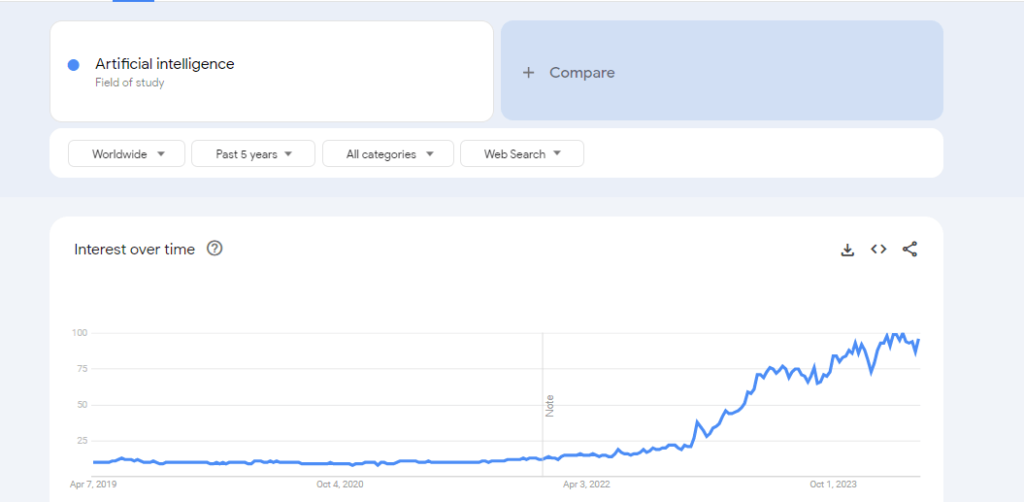
And here’s a topic with declining demand.
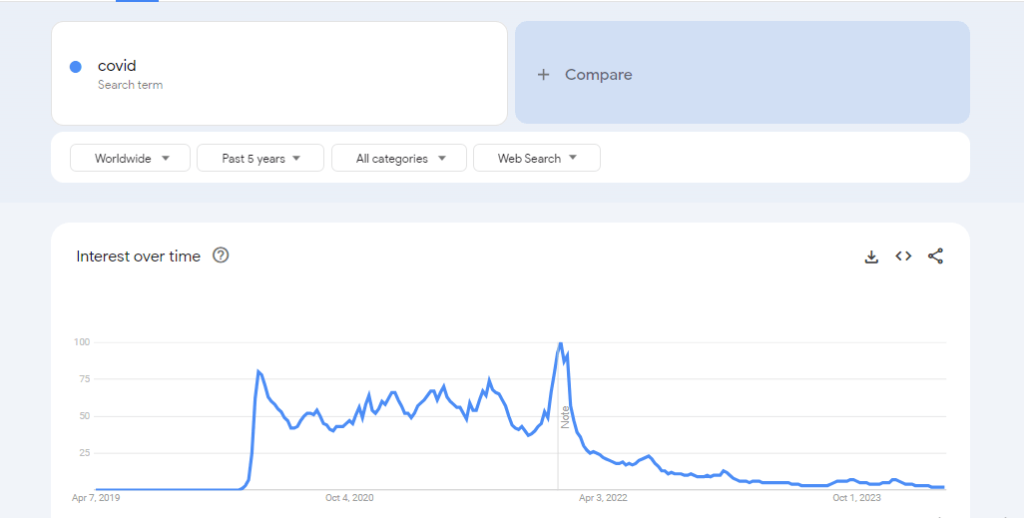
I highly suggest you pick a topic with steady or growing demand.
2. Choose a blog name and domain name
Now things started to get fun. It’s time to choose your blog’s name and domain name.
Your blog’s name is what your readers will remember you for. So make it memorable.
Our blog’s name is FaultyBlogger. That’s our brand. And that’s how we want our readers to remember us.
While your domain name is how your readers find you on the web.
Here’s an example.
The domain name for this blog site is currently www.faultyblogger.blog (will be changing it to www.fautlyblogger.com soon)
So if you have a blog name in mind already, now you have to check if your domain is available.
Go to Hostinger’s domain checker to see if it’s still available, but don’t purchase it just yet. Later in this guide, I will share with you how to get your domain name for free.
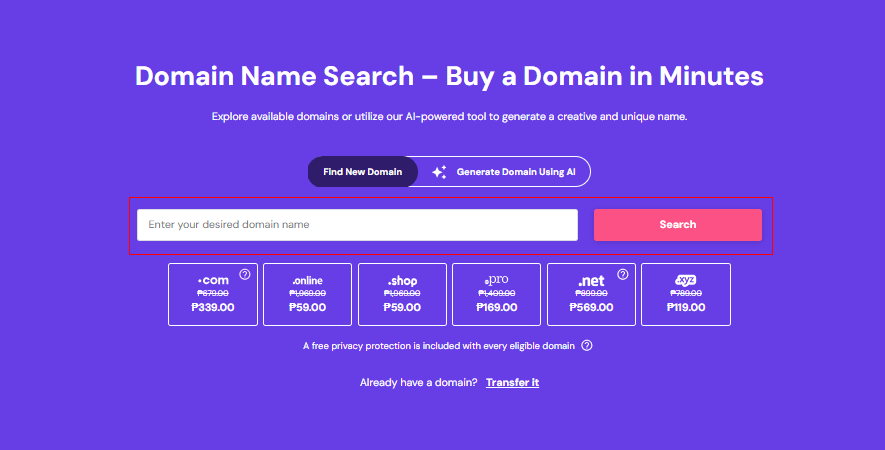
Here’s what you should consider when choosing a domain name.
- Always choose a .com
- Avoid using numbers
- Avoid using hyphens
- The shorter, the better (2-3 words max)
3. Get Hostinger web hosting, get your free domain name, and learn how to use WordPress
It may sound complicated, but it’s easier than it sounds. And before you ask, there’s no coding needed to create your blog site.
Web hosting is simply a storage of your blog site files. Every blog site or any website needs a web host to be accessible on the internet.
The good news is that Hostinger web hosting offers great value at a very affordable price for as low as ₱109/mo.
And while you can start with a Premium plan, I highly recommend you go for the Business plan. It includes a CDN (content delivery network), which means it will make your blog site faster. Plus, it includes a daily backup. So you can easily restore files in case you mess up on your site.
The free domain name is not offered in a 1-month plan. So I suggest that you choose a plan with at least 12 months to get a free domain name. And choosing a plan with more than 12 months will give you a better deal.
Keep in mind that plan prices may change at the time of this writing.
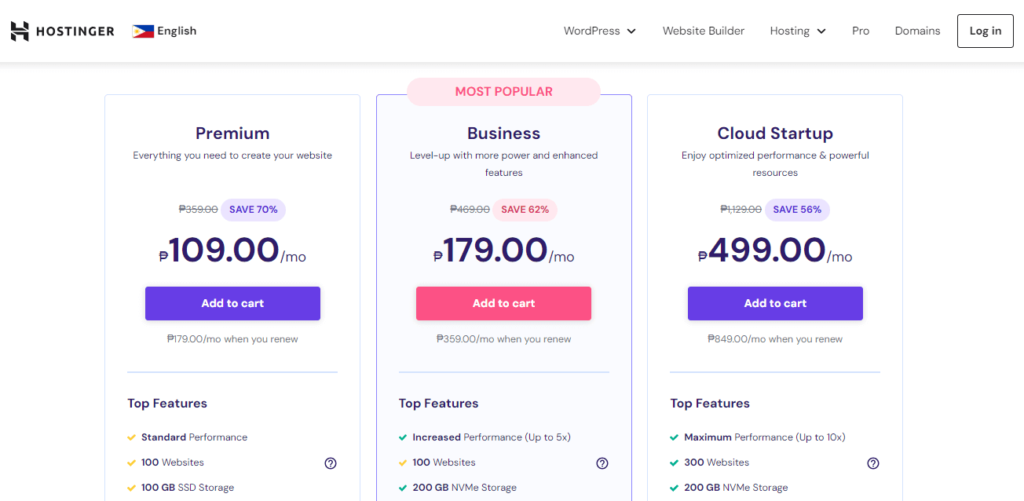
While there are other companies that offer web hosting, I highly recommend you host your blog with Hostinger. I have been a customer for more than 3 years now, and have been satisfied with their service ever since.
But before you purchase a plan, I’d like you to introduce WordPress, your blogging platform.
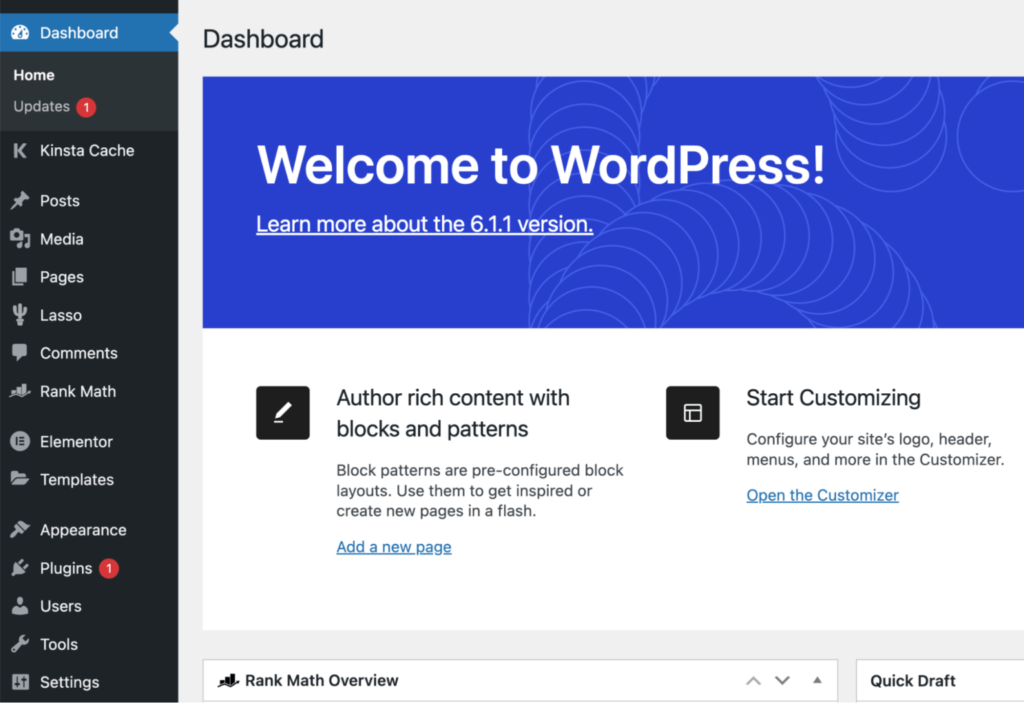
And while there are different blogging platforms out there, WordPress is the most popular CMS (content management system).
Why? Because it is free, user-friendly, and powerful.
DID YOU KNOW? The first version of WordPress was released on May 27, 2003. This makes WordPress older than both Facebook and Twitter!
WordPress is already included in your Hostinger’s plan. So you won’t have to worry about how to install it.
Keep in mind that there are 2 different versions of WordPress. There’s WordPress.com and WordPress.org. We will be focusing on the latter.
At this point, I suggest that watching a quick video tutorial is much easier for you to follow.
And because I’m not comfortable doing video recording yet, I’d like you to watch this 16-minute video tutorial from Hostinger’s team on how to purchase a plan, register your domain name, and use WordPress.
It’s a beginner-friendly tutorial that you can easily follow along. So get a plan now on Hostinger’s website and watch the video from start to finish.
At this point, I assume that you already have web hosting, register your domain name, and have your WordPress blog set up by following the step-by-step instructions in the video.
Using WordPress seems to be overwhelming at first, but if you spend more time with it, you’ll get used to it in no time.
Now, I’d like to talk more about WordPress plugins, which I think they didn’t give much attention to in the tutorial.
Plugins are apps that add more functionality to your WordPress blog.
Most plugins are free, but there are also premiums that you need to pay for.
As a newly made blog site, you won’t be needing those premium plugins yet. But there are essential plugins that I want you to use when starting out (use the free version only).
To install a plugin, just head to your WordPress dashboard>Plugins>Add New Plugin.
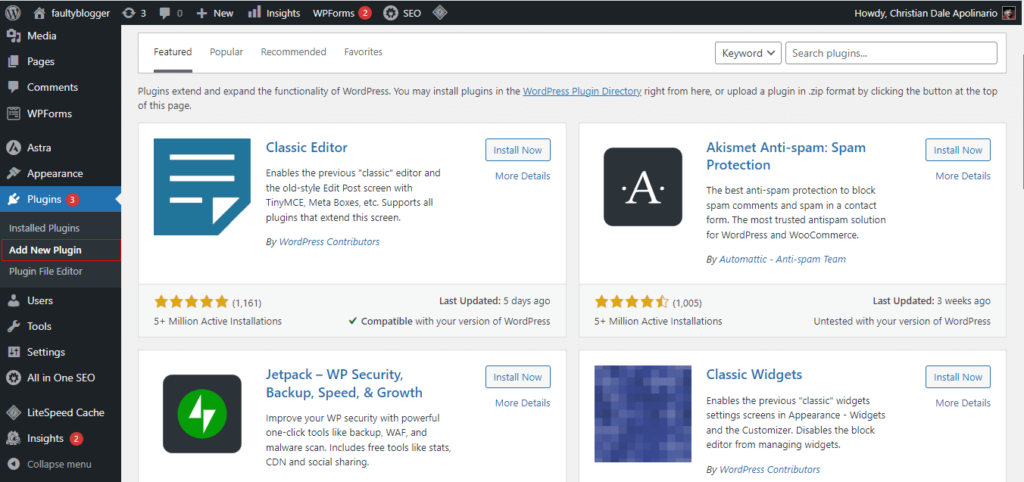
Yoast SEO plugin
This WordPress plugin is for your SEO (search engine optimization), which will help you rank better on search engines.
Keep in mind that there are other SEO Plugins out there, and installing more than one SEO plugin on your site may create errors.
So use only one SEO plugin at a time. I will explain more about SEO in the later section down below.
You may want to check this video on how to use Yoast SEO for beginners.
Akismet plugin
Spams are rampant online. This plugin will prevent you from receiving spam messages.
Google Site Kit plugin
This is a free plugin from Google, which allows you to monitor your blog site’s performance such as how many users are going to your site, the site’s speed, and a lot more.
Here’s how to set up your Google Site Kit on WordPress.
Wordfence plugin
Wordfence is a security plugin for keeping your site safe from malware and attacks.
There are a lot of great plugins in the WordPress directory. Just keep in mind that having more plugins may slow down your blog site. So keep only the plugins that you need.
You can always add more later or remove those you won’t be needing anymore.
DID YOU KNOW? WordPress is not just for starting a blog. By learning WordPress, you will be also able to build Portfolio, Corporate, Non-profit, and Ecommerce websites!
4. Start creating content
When creating content for your blog, here’s a checklist that you should consider before hitting the publish button.
- Break up content into small paragraphs and use short sentences for easier readability and digestion.
- Speak in a conversational tone, and use “You” and “I” on your blog post, because readers want to be involved in a conversation.
- Create content that is useful rather than viral, because useful content tends to be evergreen.
Writing your first blog won’t be perfect. So don’t worry too much about it.
You can always edit your post even after you have published it. And by blogging regularly, your writing will improve naturally.
5. Promote your blog
You don’t have to promote your blog if you’re just blogging for fun.
But if you want to make money blogging online, then you gonna need to promote your blog in different ways. And having little to no readers sucks.
Even our newly made blog site (www.faultyblogger.blog) has no user traffic yet.
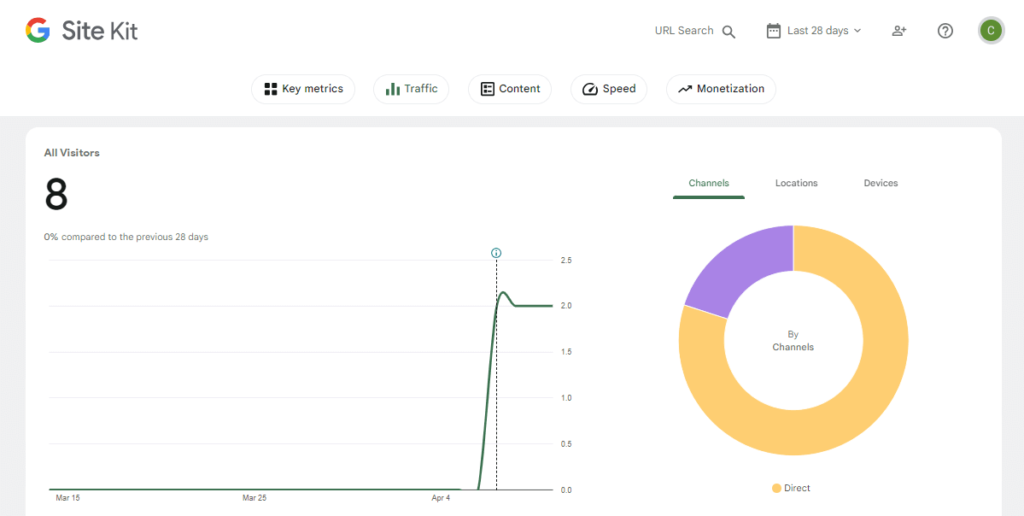
But it’s okay. Everyone has to start from the bottom. And with the right strategies, our blog and yours will gain visitors in no time.
That’s why it’s important to learn the best ways how to promote your blog from the start.
Blogging with SEO in mind
SEO (search engine optimization) is the process of improving your website’s page ranking on SERPs (search engine results page) such as Google.
SEO is a big topic. And covering the topic in a single article won’t be possible.
To get started with SEO, check out my SEO beginner’s guide.
DID YOU KNOW? Google receives over 8.5 billion searches per day, making it crucial for businesses to optimize their websites to rank higher in SERPs and attract organic traffic (free traffic).
Promote your blog on social media
It may take some time for your blog to rank on search engines such as Google. So it’s best to explore other strategies as well.
Use social media. Let your friends know that you have created a blog.
And when your friends like your blog post, there’s a chance that they will share it with their friends as well.
Then you will be surprised that your blogs started to gain some traffic.
Email marketing
When you have a new blog post, your readers won’t know about it right away. So you need to notify them if you publish a new post.
The best way to do this is to start capturing your reader’s email from day one.
Here’s an example of a newsletter form from my personal blog where you can capture your reader’s email.

How to start a blog FAQs
Here are the common beginner questions asked to start a blog.
Can you earn money from blogging?
Yes! On average, a blogger earns approximately $3,137/mo, while others earn more than $100,000/mo.
When starting a blog, most aspiring bloggers don’t care about monetizing their blog. They just want a platform to express their thoughts and share their experiences.
But when they realize that there’s a huge potential earning from blogging, they don’t want to miss that opportunity too.
When you are just starting out, I want you to focus on creating useful content. Because the more you think about how you can earn from your blogs, the more you will lose your focus and could quit blogging sooner or later.
Keep in mind that blogging won’t make you rich quickly. It’s a long-term game. It will take months or even years to become profitable.
And when you have earned a lot of loyal readers by consistently providing useful content, it will be much easier to monetize your blog.
I am not a writer. Can I still start a blog?
Absolutely! Blogging doesn’t require you to be a professional writer.
I don’t even consider myself a good writer. That’s why I’m a certified faulty blogger.
I started a blog because I love sharing my experiences and the new knowledge that I acquire through blogging.
And with more practice, you will become a better writer.
AI (artificial intelligence) can now write content. Will AI replace human writers?
AI is great. But it won’t replace human writers anytime soon.
Good writing involves creativity and human intelligence, which AI struggles to replicate.
There’s a lot of competition in my niche, can I still stand out?
Yes! Here’s what Niel Patel has to say about this.
“Since the inception of the internet, there has been almost no content released that is 100% original. So when readers decide to follow your content over someone else’s, what they are really following is you.”
How can I log in to my WordPress blog?
To log in, simply open your Hostinger account. From the navigation, click “Websites” on the menu. Then choose a website you want to edit, then click the “Admin Panel”.
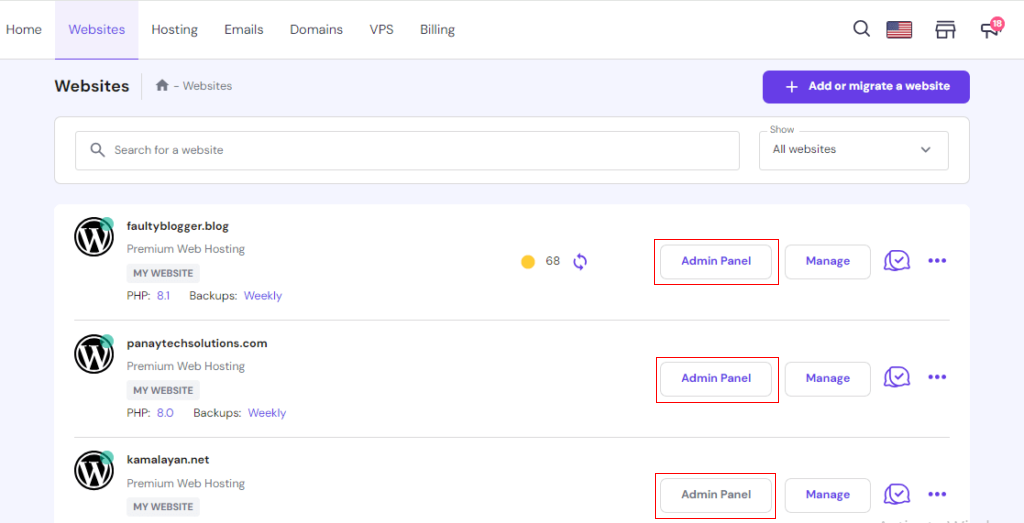
Another way to log in to your WordPress blog is to simply type your domain name on Google and by adding /wp-admin.
Here’s an example.
www.yourblog.com/wp-admin
Final thoughts
Every successful blogger (and faulty bloggers) started with this step. And by starting your blog, you are already on the path to becoming a successful blogger.
The sky’s the limit. Start sharing your thoughts and experiences through blogging.
How has the article helped you start a blog? Let me know in the comments below.
Featured Image Credit: Lukas
I’m a certified faulty blogger, proactively learning how to become a better blogger and sharing these insights with you here at FaultyBlogger. I also write entrepreneurship on my personal blog.


